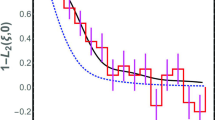Abstract—It is known that linearly polarized translational vibrations can multiply the capture cross section of deposited solid particles by a single gas bubble suspended in a liquid. This fact is of great theoretical and practical importance for using vibrations to intensify the flotation process, which, however, involves multiple rising bubbles. The present work studied the capture of solid particles by a gas bubble ensemble in liquid exposed to high-frequency small amplitude vibrations in two-dimensional formulation numerically. The numerical solution was obtained using ANSYS Fluent software. The obtained fields of the averaged and pulsating components of the flow velocity were then processed by our own code in order to calculate the trajectories of small particles from a “cloud” located in the computational domain. The description of forces acting on the particle took the added mass of the fluid, gravity, the Archimedean force, Stokes force, Basset force, and the vibrational force due to the inhomogeneity of the pulsating field into account. The calculations were performed for millimeter air bubbles in water with particle characteristics significant for the flotation process. The influence of vibrations is shown to be significantly attenuated within the bubble ensemble due to the “screening” effect, which peaks at the highest vibration frequency and depends weakly on the distance between the bubbles. However, vibrations of a lesser frequency, at which the gas in bubbles is compressible, are still able to penetrate deep into the liquid volume at a sufficient excitation intensity, and thereby increase the particle capture region.








Similar content being viewed by others
REFERENCES
Bjerknes, C.A., Hydrodynamische Fernkrafte: fünf Abhandlungen über die Bewegung Kugelformiger Körper in einer inkompressiblen Flüssigkeit (1863–1880) (Hydrodynamic Remote Forces: Five Essays on the Motion of Spherical Bodies in an Incompressible Fluid (1863–1880)), Leipzig: Wilhelm Engelmann, 1915.
Alekseyev, V.N., Forces of action of a bubble on solid particles in sound fields, Sov. Phys. Acoust., 1991, vol. 37, no. 4, pp. 309–312.
Lyubimov, D.V., Klimenko, L.S., Lyubimova, T.P., and Filippov, L.O., The interaction of a rising bubble and a particle in oscillating fluid, J. Fluid Mech., 2016, vol. 807, pp. 205–220. https://doi.org/10.1017/jfm.2016.608
Zaichkin, E.V. and Lyubimov, D.V., The behavior of a body suspended in a fluid in a field of torsional vibrations, in Vibratsionnye effekty v gidrodinamike (Vibration Effects in Hydrodynamics), Lyubimov, D.V., Ed., Perm: Perm Gos. Univ., 2001, No. 2, pp. 97–109.
Lyubimov, D.V., Lyubimova, T.P., and Cherepanov, A.A., Dinamika poverkhnostei razdela v vibratsionnykh polyakh (Dynamics of Interfaces in Vibrational Fields), Moscow: Fizmatlit, 2003.
Bozzano, G. and Dente, M., Single bubble and drop motion modeling, AIDIC Conf. Ser., 2009, vol. 9, pp. 53–60. https://doi.org/10.3303/ACOS0909007
Dai, Z., Fornasiero, D., and Ralston, J., Particle-bubble collision models—A review, Adv. Colloid Interface Sci., 2000, vol. 85, pp. 231–256. https://doi.org/10.1016/S0001-8686(99)00030-5
Lyubimov, D.V., Klimenko, L.S., Lyubimova, T.P., and Filippov, L.O., Surfactant effect on interaction of rising bubble and particle in a liquid subjected to vibrations, J. Phys.: Conf. Ser., 2017, vol. 879, p. 012022. https://doi.org/10.1088/1742-6596/879/1/012022
Funding
This work was supported by the Russian Foundation for Basic Research (project no. 17-41-590974-r_ural_a).
Author information
Authors and Affiliations
Corresponding authors
Additional information
Translated by L. Trubitsyna
Rights and permissions
About this article
Cite this article
Konovalov, V.V., Lyubimova, T.P. A Numerical Investigation of the Vibration Effect on Interactions in a Gas Bubble Ensemble and Solid Particles in a Liquid. J Appl Mech Tech Phy 61, 1080–1088 (2020). https://doi.org/10.1134/S0021894420070056
Received:
Revised:
Accepted:
Published:
Issue Date:
DOI: https://doi.org/10.1134/S0021894420070056




